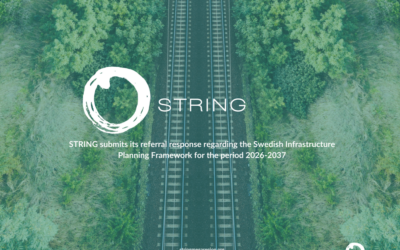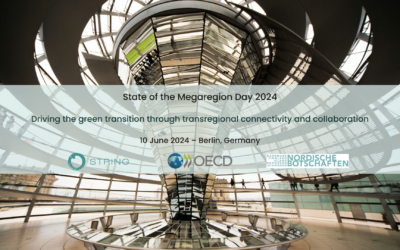European infrastructure has no boundaries
We want to see a shift of paradigms in European infrastructure planning. The planning of infrastructure cannot longer be seen only as a matter of national affairs.
Large-scale projects such as the tunnel under Fehmarn Belt and the new Swedish high speed railway will affect the entire transport system, and therefore they cannot be viewed as national concerns, but are projects that tie our regions closer together and increase cross border mobility. The countries in Northern Europe must therefore take joint responsibility for our common rail system.
In the “Stockholm Declaration” we encourage the policy makers in Sweden, Denmark and Germany to take measures towards strengthening the European Transport Network.
To increase the cross border mobility we further need:
- A continuous strong support for the Fehmarn Belt Fixed Link. We recommend the German authorities to do everything in their power to secure the approval process of the Fehmarn Belt Fixed Link.
- A fast building start of the new Swedish high speed railway starting in Southern Sweden as one way to maximize the potential from the Fehmarn Belt Fixed Link.
- Improvements on major bottlenecks in Northern and Central Europe.
- A coherent planning across national borders and together with regional partners in order to deliver a seamless infrastructural system.
The regions along the ScanMed Corridor account for 27 percent of the EU’s total GDP and 23 % of its population – over 114 million people live here.
Large scale strategic projects in the common transport system benefits everyone who travels through Europe. We are convinced that the Fehmarnbelt Fixed Link will become a game changing link between Scandinavia and Central europe. Therefore, we need continuous support for the link and we encourage the German authorities to give the legal procedures needed high priority.
However, getting the full exchange out of our future infrastructure projects requires a number of surrounding investments, and we need them now.
Firstly, the positive development in the wake of the Fehmarn Belt Fixed Link depends on complementary investments in the Scand-Med Corridor. One of these is the planned high-speed railway Swedish for the Stockholm-Gothenburg and Stockholm-Malmö. From our perspective, a future high-speed line that continues from Sweden to Denmark and into Northern Europe will mean major improvements in mobility and accessibility, both in cities and in rural areas.
Secondly, we need to eliminate the worst bottlenecks, which are currently stopping traffic along the corridor. This requires a fast start construction from the south. This would effectively ensure the maximum impact of the Fehmarn Belt Fixed Link through a seamless rail connection between Stockholm and Hamburg and further into Europe.
Thirdly, we need immediate improvements in existing infrastructure at key stretches of the Scand-Med Corridor, including expansion to four tracks on the route Lund- Hässleholm and between Malmo and Stockholm, as well as double tracks along the West Coast line towards Oslo.
Bottlenecks, as single-track rail lines, are not local problems that only affect travelers in isolated regions. They must be taken for what they are – a serious hindrance for both passengers and freight services that affect the entire common transport system.
The investments we propose for the Swedish, Danish and German governments in the “Stockholm Declaration” are needed if we are to ensure a direct and maximum impact of the Fehmarn Belt Fixed Link. They would not only shorten travel times in passenger traffic and increase mobility in Northern Europe, they would also significantly improve the accessibility of Scandinavia’s two largest airports: Copenhagen Airport and Stockholm Arlanda.
In conclusion, we emphasize the importance of a common infrastructure planning between governments, agencies and regional actors, to provide a unified infrastructure systems. It is basically about jobs, quality of life and business competitiveness. This requires full accessibility to the rest of Europe and the world.
Now we stand in true momentum. We have a unique opportunity to create something long-term that will generate better opportunities and make a significant difference for our citizens in the future.
Signed by:
Pat Cox, European Coordinator for the TEN-T Scandinavian-Mediterranean Corridor
Wolfgang Schmidt, State Secretary at Free and Hanseatic City of Hamburg
Anke Spoorendonk, Minister for Justice, Culture and European Affairs, Schleswig-Holstein
Henrik Appel Esbensen, Member of the City Council, City of Copenhagen
Sophie Hæstorp Andersen, Chairman of the Regional Council, Capital Region of Denmark
Jens Stenbæk, Chairman of the Regional Council, Region Zealand
Thomas Hansson, Chairman of the Regional Committee for Development, Region Skåne
YOU CAN READ THE ARTICLE IN DAGENS SAMHÄLLE HERE (in Swedish)



